On July 1, 2018, the municipality of De Panne and the War Heritage Institute, with the support of defence, organized a unique ceremony. Not only was the Belgian military cemetery, Day to day, 100 years ago officially inaugurated, but also 4 Belgian soldiers were re-buried. It was from 1975 ago that another Reburial of Belgian soldiers took place!
After the necessary searches and DNA-samples, they managed to find the identity of 3 soldiers.
It involved 3 soldiers of the 12th Line Regiment. Below are their biographies.
Biography of Petrus Franciscus Emmanuel Pintens
Petrus Franciscus Emmanuel Pintens was born in Mortsel on November 5, 1890, as the son of Joannes Ludovicus and Louisa Weehuysen. The Family moved to Hoboken sometime before the turn of the century. Nowadays Hoboken is an urbanised district of the City of Antwerp, but back then it was a small, independent municipality.
Although it is virtually impossible to say much about his military career without military records, we can be fairly sure that he did military service in 1910-1911. He served as a private first class in the 12th Linie Regiment, which was then based in Liège. Nowadays the 12-13the Line's barracks are in Spa. It is also possible that he did his service in Lier, where the regimental depot was located.
Shortly after completing his military service he married Louize Claessens, their marriage was blessed with a daughter, who was to die childless in 1933. This is where the trail goes cold.
Mitichondrial DNA is passed on from a mother to her children, but is not passed on any further by her sons. It therefore contains information on the lineage of mother to daughter to granddaughter. It is this DNA that is important to researchers. As nearly everyone can be sure who their mother was, it has been decided to research lineage through the female line.
This made it possible to trace Pintens via the granddaughter of a cousin, who was prepared to give a sample of her DNA for research as long as she could remain anonymous. The first positive identification was a fact.
.jpg) Biography of Gerard Joseph Dethier
Biography of Gerard Joseph Dethier
Gerard Joseph Dethier was born in Villers L'Evêque to Guillaume Capelle and Marie Julienne Felicite on November 4, 1888.
The family moved to Dalhem where they ran a farm.
Dethier's records are full of contradictions. In 1914, he volunteered to sign up withe the 12th Line Regiment, but before the war he had done his military service with the transport column of the 4th army division. It is therefore strange that he was not mobilised by his unit. What is certain is that from August 4 to October 24 1914, he served as a private first class with the 12th Line Regiment and died as such in Diksmuide on October 24 1914. A certificate issued by the Court of First Instance in Liège was included in the death register in Dalhem, where he had lived. A street was also named after him, so that his name lives on in Dalhem.
The researchers started with the archives of the city of Liège, but this did not include all his family ties. Ms. Christel Blondeau, an employee of Dalhem's Cultural Department, discovered that Delthier's mother had remarried and gone on to have more daughters. Through the lineage of one of the daughters, it was possible to trace a distant cousin who was prepared to give a DNA sample. This led to the second positive identification.
.jpg) Biography of Félix Alphonse Jacquet
Biography of Félix Alphonse Jacquet
Félix Alphonse Jacquet was born in Liège to Félix Leopold Gerard and Binet Marie Thérèse Alphonsine on March 30 1893. The family moved to 72 rue du Batty in the neighbouring municipality of Ougréenu, a borough of Seraing.
As is the case for many soldiers who were killed at the start of the war, his records are rather thin. According to the files, he died on October 20 1914, but the death certificate issued by the Court of First Instance in Liège states October 24 1914.The records state that he was killed by a rifle bullet. In view of the circumstances, we must accept this as the truth.
No descendants were found, but through deduction we can be almost certain that he was the third fallen soldier from the 12th Line Regiment.
The ceremony in pictures:
At the entrance of the cemetery was an installation made by the pupils of the 5th and 6th grades of the schools of Adinkerke and De Panne, following the commemoration ceremony.
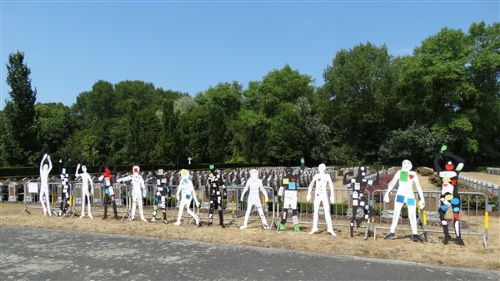

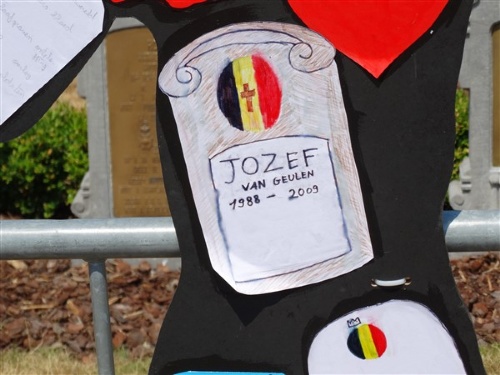
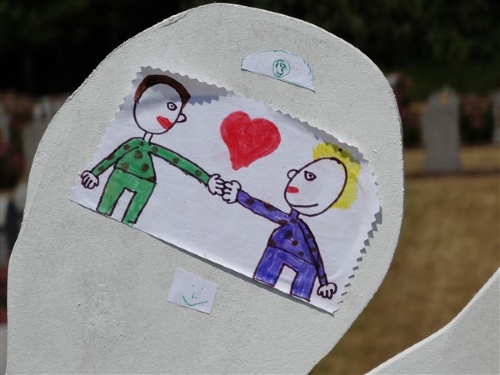
The flag bearers were waiting for their relocation
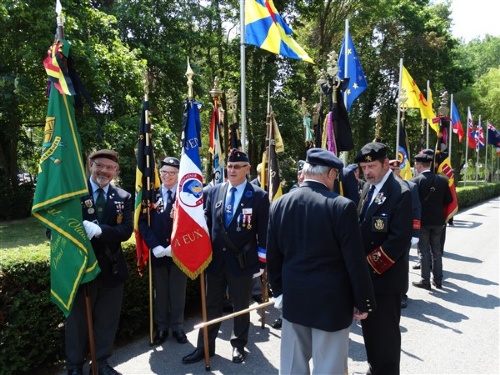
Last test of the music installation
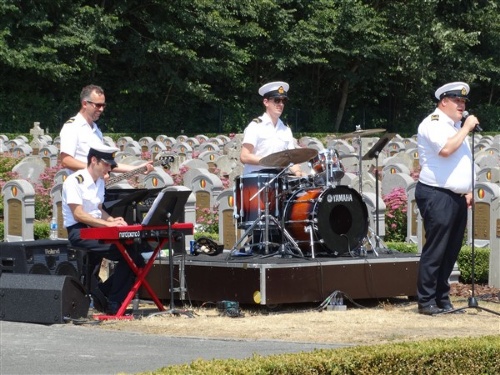
The reburial area
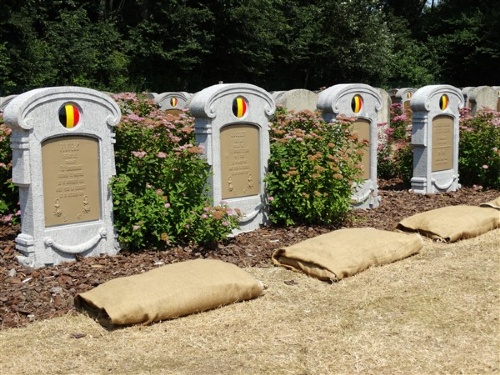
Welcome by Lt-Col Rudy Baert followed by the deployment of the troops and banners
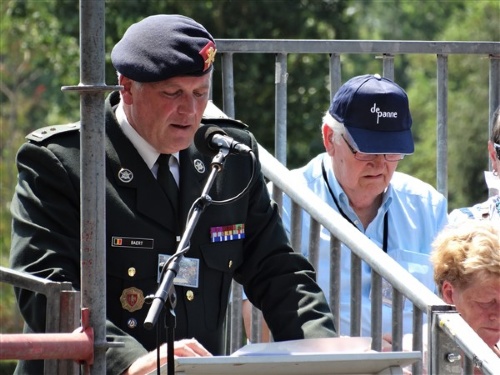
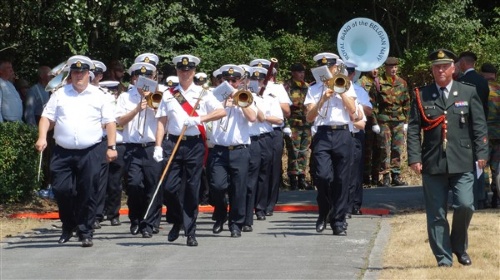

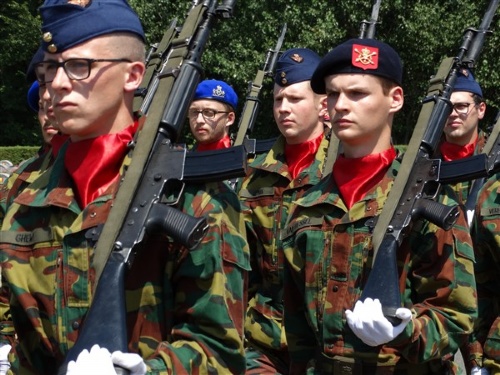
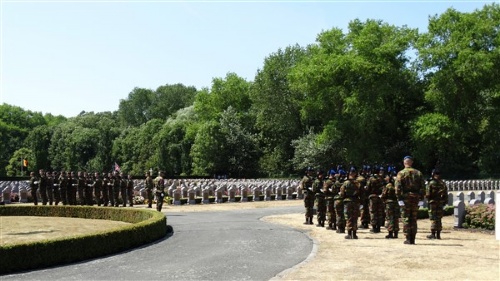
The Flags led by Mr. Alain Fontaine
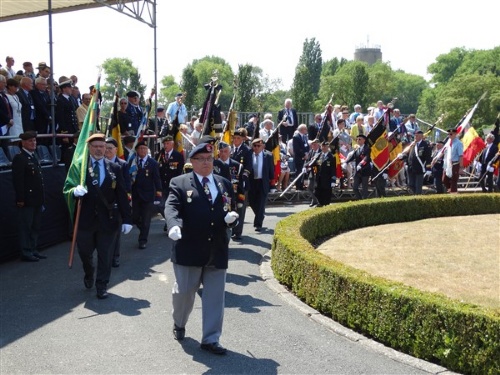
The Royal Navy Band
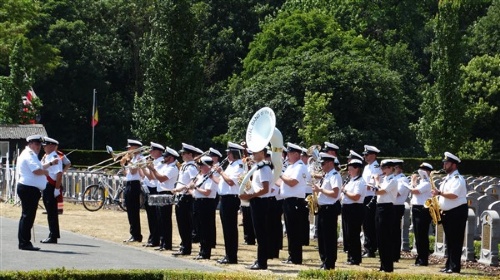
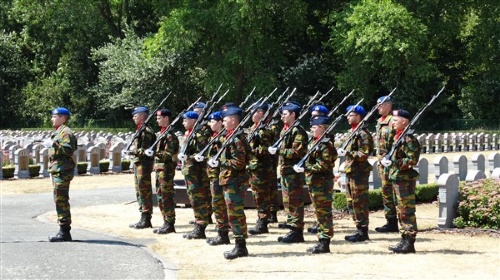
Welcoming the VIP's
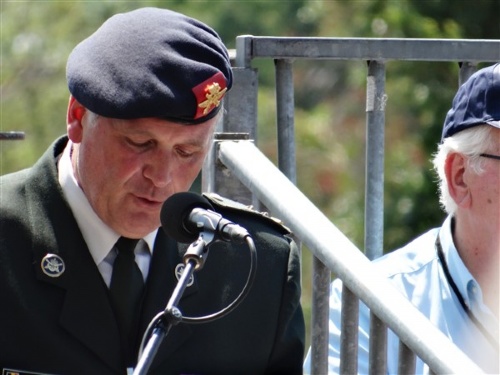
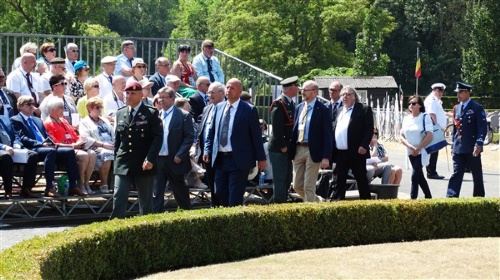
The emblems were surrounded by a Honor Detachement composed of soldiers of the 12-13th Line regiment from Spa and soldiers of the Center Basic Training and Training North from Leopoldsburg, led by Lt-Col BEM Ludovic Hermans, Corpssuperior of 12-13Li.
The banner of the 11Li is saved by the Military Commando Province of Limburg, the standard of the 2/4Li is kept at the Centre for Basic Training and Training from Leopoldsburg and the banner of the 12-13Li came from SPA.
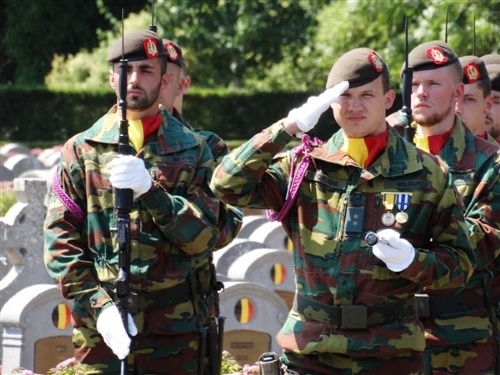
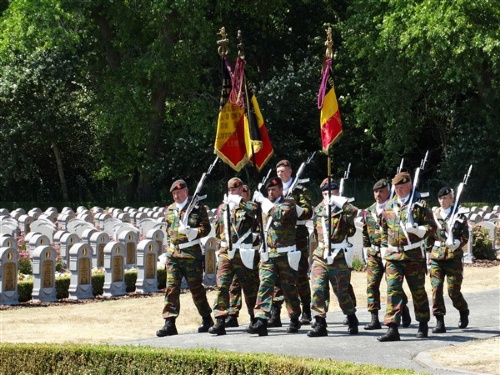
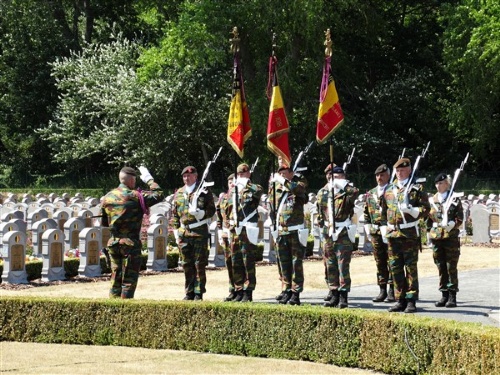
The Chef Protocol Defence greeted the Emblems together with the Mayor of De Panne, Mrs. Ann Vanheste and the Director General ad interim of the War Heritage Institute, Mr Michel Jaupart
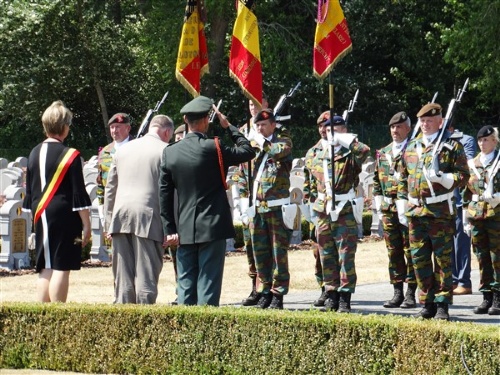
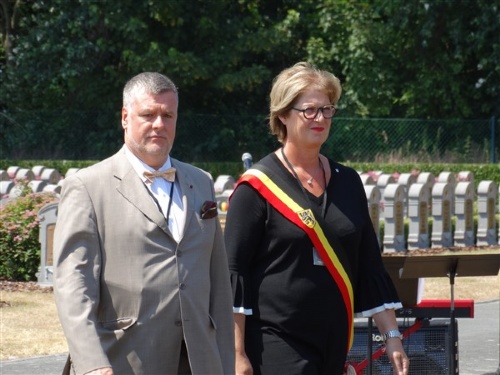
Arrival of Minister of Defense, Mr. Steven Vandeput
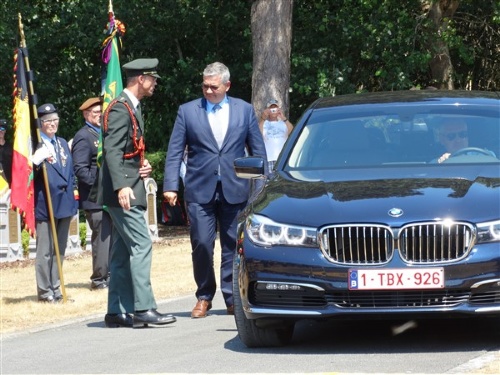
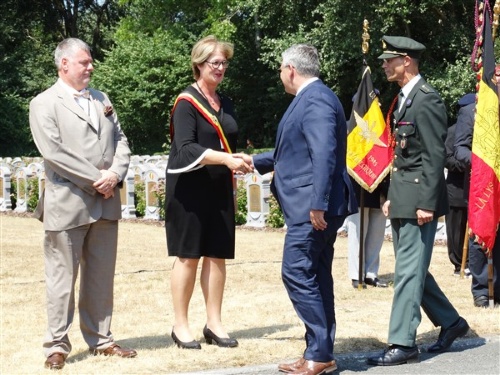
Reception of the legal representative of his Majesty
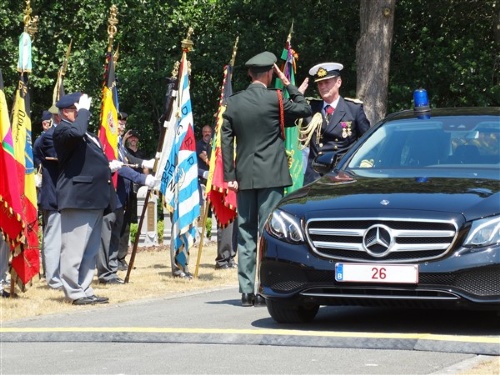
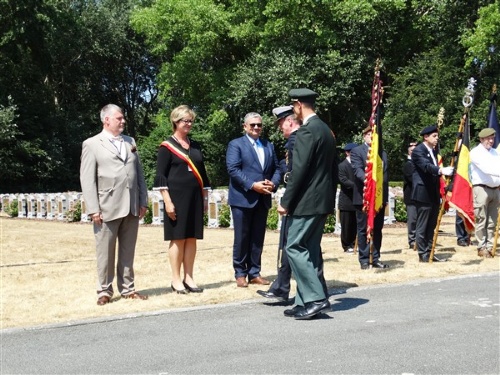
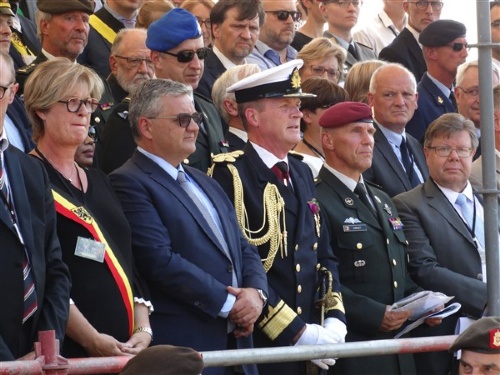
Speech by Miss Ann Vanheste, Mayor of De Panne
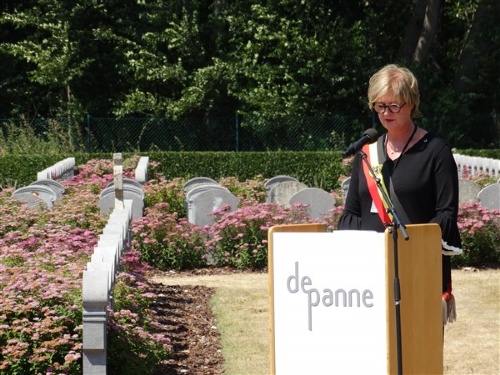
Historical reading: '100 year Military Cemetery' by Mr Johan Dhaenens
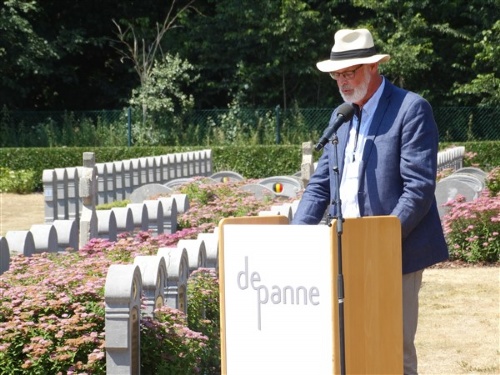 If you read up on the history of battles up to the 19th century, you will see that soldiers are usually buried in a mass grave in the immediate vicinity of the battlefield. In general, officers are repatriated to their home country or returned to their hometown and laid to rest in an individual grave.
If you read up on the history of battles up to the 19th century, you will see that soldiers are usually buried in a mass grave in the immediate vicinity of the battlefield. In general, officers are repatriated to their home country or returned to their hometown and laid to rest in an individual grave.
The First World War brought about a new evolution to this tradition. During the war's flanking manoeuvres (The Schlieffen Plan) and also at the start of trench warfare, fallen soldiers were still buried on the spot. Increasingly, however, comrades in arms of the fallen would begin laying them to rest in individual graves. These graves are usually marked by a cross and are 'decorated' with just about anything one can find.
As the war progressed, small burial sites and larger cemeteries would come to be constructed in the vicinity of First Aid posts and military or Red Cross hospitals. This was so that the dead could be brought a greater distance away from the front line to be buried.
On the territory of De Panne and Adinkerke there are two Belgian military cemeteries. This is understandable since during the First World War there were also two major hospitals: the Red Cross Hospital l'Océan on the Zeedijk in De Panne and the military field hospital situated in the Cabour demesne in the sub-municipality of Cabour, Adinkerke. The Belgian De Panne military cemetery is the largest in all of Flanders. The cemetery is a flat rectangular plan, with an area of 2.700 square meters. It borders the Oosthoek's Kykhill Dune Park and the Calmeyn Forest and has been a protected monument since 2008.
The military cemetery is closely linked to the civilian cemetery which is located in the same area. In 1911 De Panne became an independent municipality; however, the new municipality still did not have its own church graveyard, nor did it have its own independent cemetery. The dead continued to be buried in the Adinkerke Military Cemetery. Negotiations were entered into with the Calmeyn family to buy a plot of land and build a cemetery there; however, the provincial government blocked these efforts because the price of 32.000 Belgian Francs (EURO 800) was deemed too expensive for the then young municipality. In June 1916, the Municipal Council requested that the Military Governor at the time, Andringa, requisition the land needed for a cemetery so that the soldiers and civilians of De Panne could be laid to rest in De Panne itself. The Adinkerke churchyard cemetery and the Adinkerke Military Cemetery sharing the same place had nearly reached their capacity and could not be expanded any further. It was not until January 1918 that the current cemetery was established, with both military and civilian parts. Both cemeteries were designed by architect Eugènen Dhuicque who at the time was the head of a commissioning by the Belgian Ministry of Science and the Arts tot identify and preserve all heritage from the devastation that had been wrought by the war. On 1 July 1918 the cemetery was consecrated - exactly 100 years ago to the day - by Bishop De Brouwer, the Dean of Ieper and the highest ecclesiastical authority in unoccupied Belgium. The Court of Veurne ruled to regularise the claim in 1927.
Around the year 1920 there were approximately 1.486 Belgian graves. Afterwards, several of the dead were both legally and illegally returned to cemeteries in their home towns.The solidarity graves and smaller cemeteries crisscrossing the area between Vleteren an De Panne were cleared and myriad numbers of the dead were reburied in De Panne.The cemetery, started during the First World War, was also used as a collective burial site. 3.744 of the fallen lay buried: 3.366 Belgian soldiers and civilians of the Great War, of which 811 were unknown. 36 French soldiers who fought in the Great War are also buried there, three of whom remain unidentified. As a result of the Second World War, new rows of graves had to be dug, filled mainly with the war dead of May 1940. 342 of the WWii's slain lie there, 42 of them in the tombs of the unknown.
In 1924 and 1925, the crosses and headstones then marking the graves were also removed, so that the official Belgian headstones, designed by Brussels architect Symons, could be positioned on all the graves. The family could apply to keep the original headstone, but few did so. Such an application was also needed to preserve the heldenhuldenzerken (these were headstones specifically erected for the Flemish fallen). The heldenhuldenzerken, designed by Joe Englisch, were created in 1916 with the intent to provide the Flemish fallen with a tombstone bearing a Flemish epitaph. Originally there were 27 such tombstones in this cemetery, whereas now only 13 remain.
The official Belgian bluestone gravestone weighs 150 kg and is positioned in a foundation weighing 80kg; the gravestone is embellished with scrolls and garlands.At the top there is a round enamelled plaque in the Belgian tricolour, whereas in bygone days this would have been a cross or an ascending lion (based on what the next of kin requested).
The bronze plaque in the middle of the stone lists all the details related to the late soldier. The family had the option of which language should be engraved on this. The decorations that had been bestowed were illustrated using either drawings or icons that could be found at the bottom of the headstone. For unknown soldiers who had perished in war, the bronze plaque bore the epitaph below in both Dutch and French:'unknown soldier, died for Belgium'. There are 136 headstones commemorating the fallen (i.e., this is not their resting place); In addition, there is still one private tombstone for the aide-de-camp, Jacques De Keyser.
I would like to end with a quote from the visitors' register which, like any Belgian military cemetery, can be found in a recess at the entrance.
'Respect,
simply respect.
For those who have offered up their lives for us.
For those who now, 100 years later, enure that they are never forgotten.
The deepest of thanks for caring for this beloved site.'
Chantal Kapellen
Despite the heat, many people wanted to be present
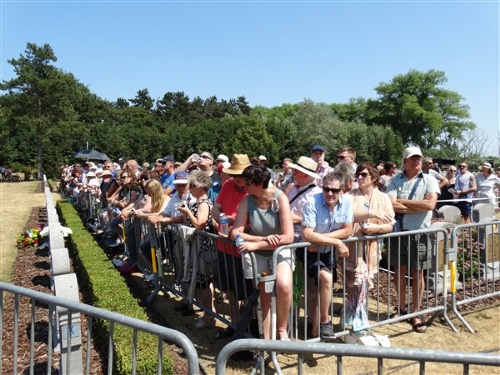
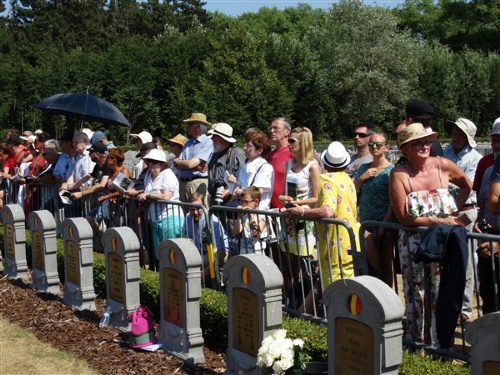
Reading about Jacobus Arnouldus Winters, one of the many fallen soldiers in WW1, by Miss Beatrice Birca
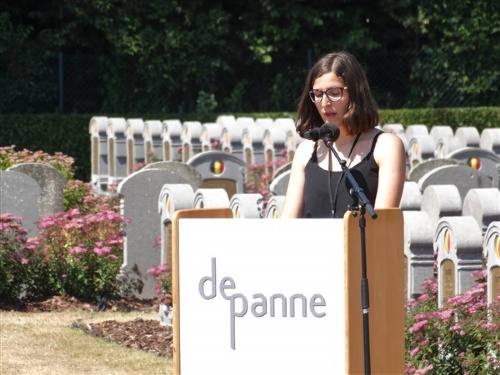 On 18 May 1890, Jacobus Winters was born on the Pastorijhoeve (Parish Farm) in Grote Brogel. He was the eldest of 12 children belonging to Christiaan Winters and Gertrudis Vrolik. His father was a farmer, President of the Farmer's Guild and was also Mayor of Grote Brogel for 32 years.
On 18 May 1890, Jacobus Winters was born on the Pastorijhoeve (Parish Farm) in Grote Brogel. He was the eldest of 12 children belonging to Christiaan Winters and Gertrudis Vrolik. His father was a farmer, President of the Farmer's Guild and was also Mayor of Grote Brogel for 32 years.
Jacobus went to primary school in Grote Brogel, and was later a student at secondary schools in both Peer and Leuven. In those days, it was far from ordinary for the eldest son of a farmer to attend secondary school. The focus of his studies in Leuven is not known. On 3 October 1910, he was conscripted into the military. He was assigned to the 11the Linieregiment (Belgian, 11th Infantry Regiment) and carried out his term of duty in Beverlo. On 14 March 1912, after 18 months of service, he left the military. He was summoned a number of times to carry out field exercises. On 29 July 1914, during troop mobilisation, he was summoned to Luik to fight in the Great War.
After nearly a year of war, he was promoted to the rank of Corporal on 22 July 1915.On Friday, 5 November 1915,it was announced in the Regiments that Jacobus Winter would be departing by train the next day from Veurne in order to make his way to Gaillon.There he would be required to attend the Officer Training College. Upon his arrival on 7 November he was immediately appointed Sergeant. Following training, Jacobus was promoted to the rank of Warrant Officer on 17 March 1916. He returned to the front, where to his regret he had now been assigned to the tenth Linieregiment instead of the eleventh. He was stationed with a company of cyclists in March of 197; however after a few weeks, he was again to be re-assigned to the seventh company of the tenth Linieregiment.
As of 5 May 1917, his company was reassigned further south. Prior to this, is unit had primarily been located in the northerly portion of the front, where they had the opportunity for rest and recreation in De Panne, Adinkerke or Bray-Dunes. Now, however, they were stationed more in the region of Roesbrugge and 'the trenches of Steenstraete'.
As of Friday 6 July 1917, the front in the Boezinge area had been retaken by the French, Jacobus Winters and his company were sent for a period of rest. They were forced to relocate to 'les Huttes', a hamlet in Gravelines. This rest was a relative thing, in that they were constantly required to learn new exercises and new methods. During this period of leave Jacobus Winters was promoted to Second Lieutenant on 24 July. After taking his oath to the Corps Lieutenant Colonel, he was informed that he had been assigned to the ninth company. His tour of duty with the seventh company had lasted 16 months. On 10 August 1917 he was transferred to the tenth company because at the time there were no remaining Flemish officers there.
By 17 November 1917, he had returned to Belgian soil. His unit was now to be quartered in Pollinkhove. They occupied the trenches of 'De Drie Grachten' (The Three Canals) and 'Luighem', only to be posted later to the Bikschote sector.
In February 1918 he was required to attend a course for a few days in De Panne, afterwards he would be permitted to take leave in Paris and Nice. On 3 March 1918, he returned to the front.
On 9 April 1918, Jacobus Winters and his men were sent on a reconnaissance mission in the vicinity of Langemark. While detaining and disarming a war prisoner he received a revolver shot to the stomach. He was transferred to the Belgian Military Hospital of Beveren-aan-de-Ijzer's local cemetery, and in August of 1924 he was reburied here, at the De Panne Military Cemetery.
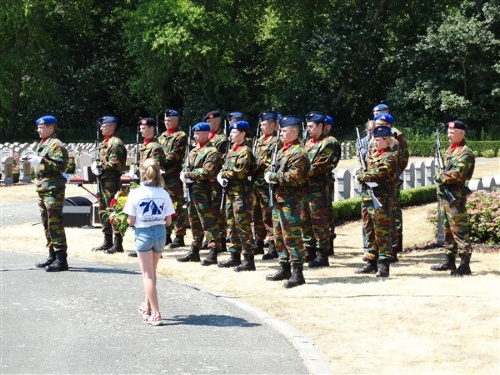
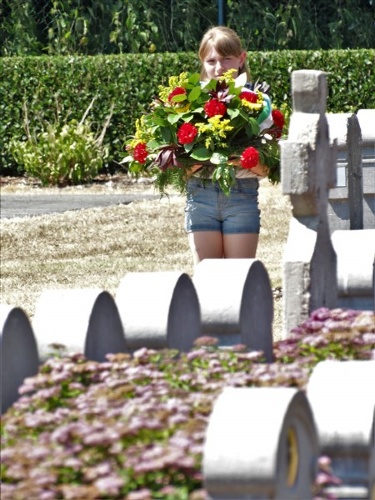
More youth was present at the ceremony
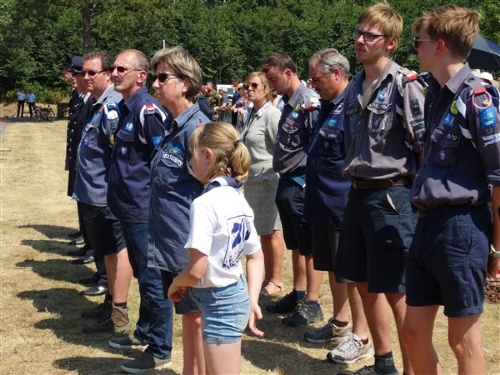
The detachments, Emblems, Music Band and Flags moved position
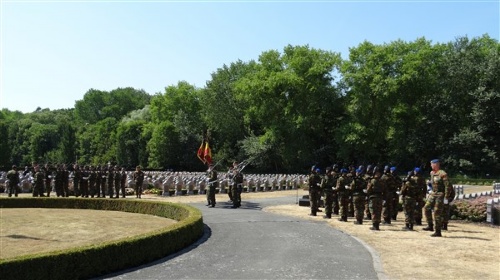

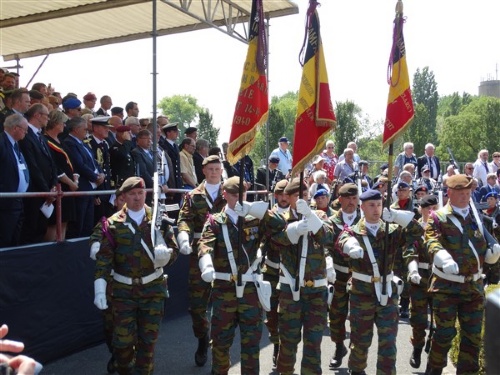
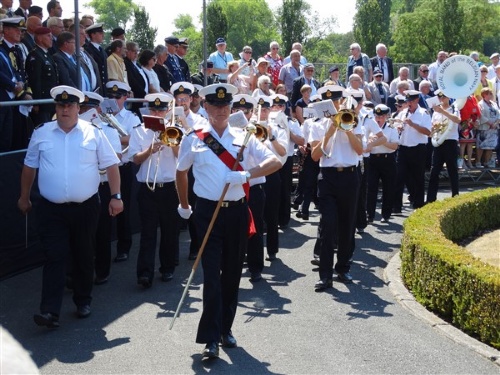


Musical intermezzo 'John Condon, Age 14' by Stephanie Demeulemeester and the Royal Navy Band

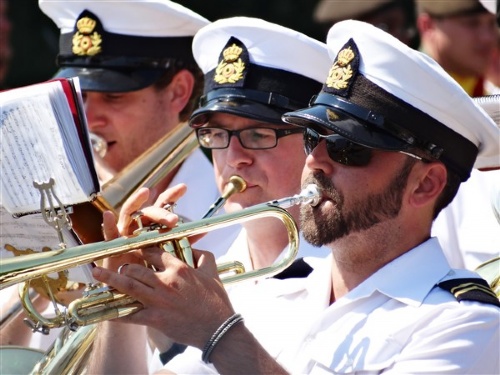
Historical reading: 'Reburial' by the Minister of Defence
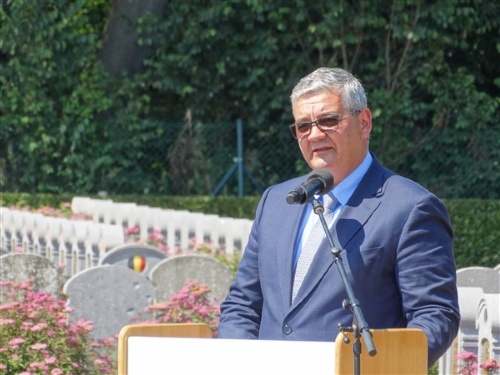
Arrival and transfer of the coffins with ornamentation of Trimarant 'Amazing Grace'
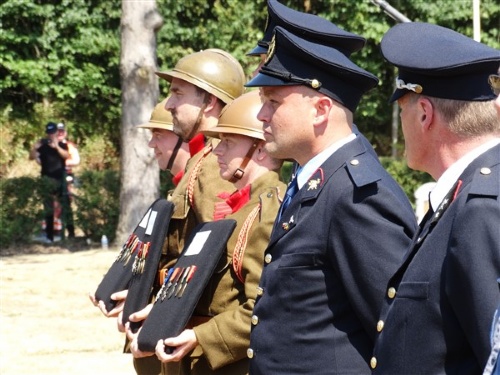
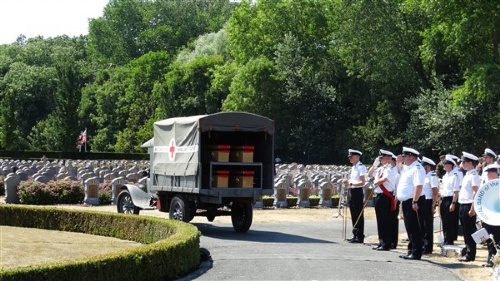
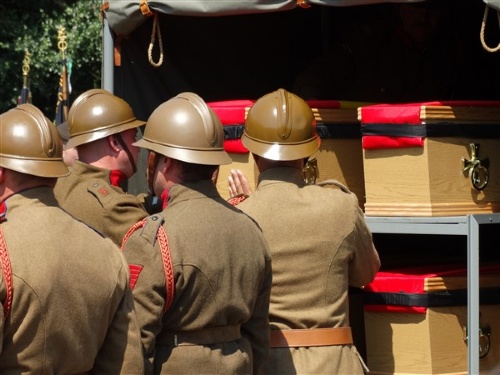
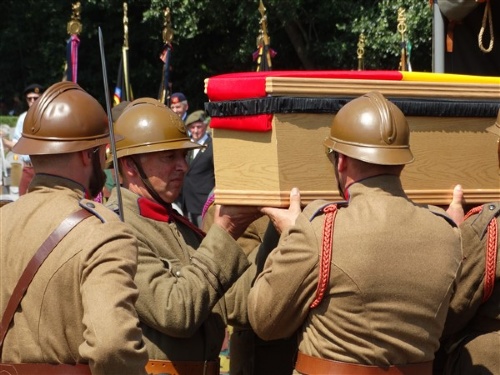

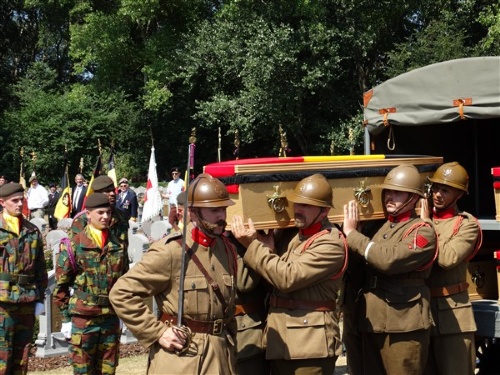
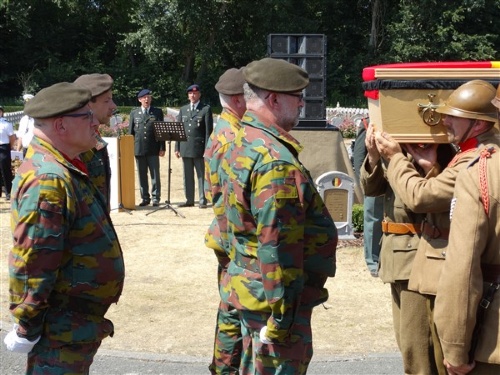
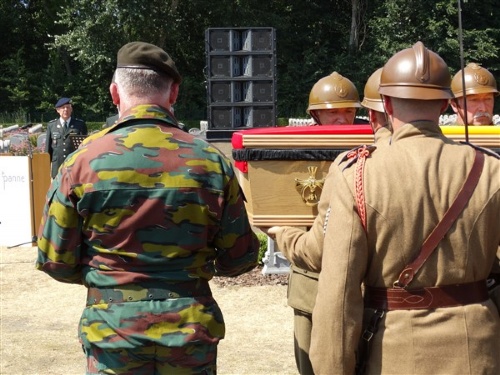
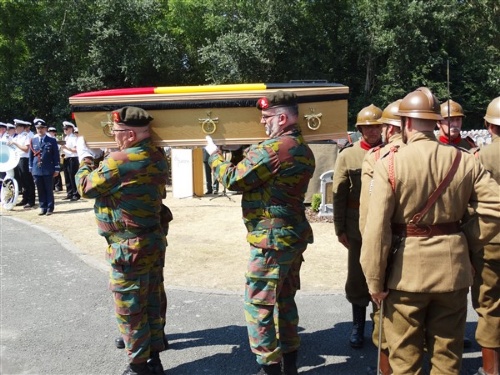
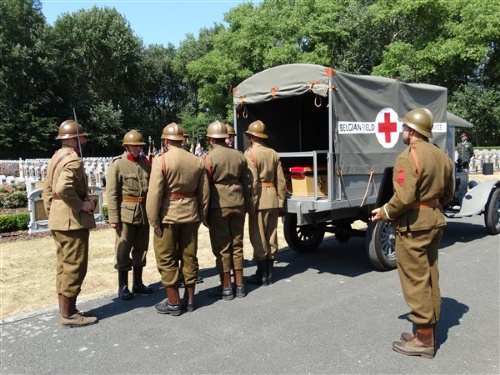

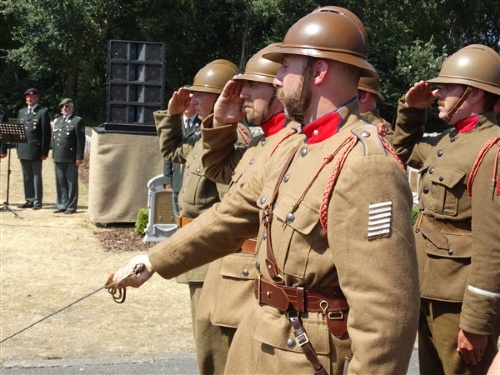

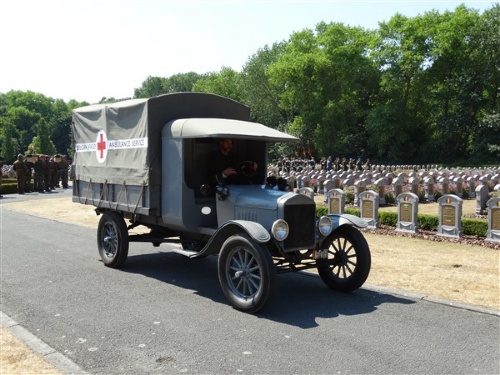
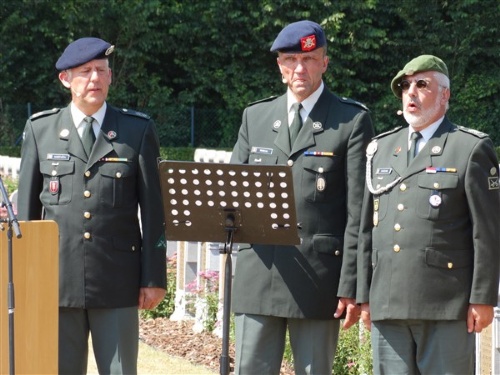
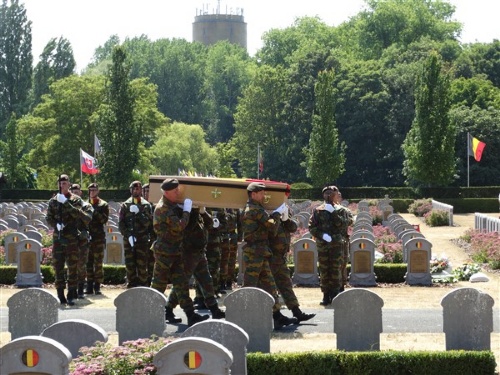
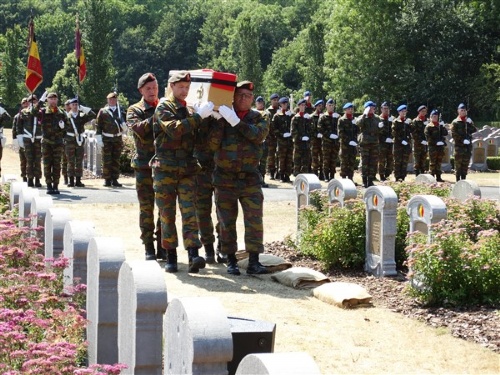

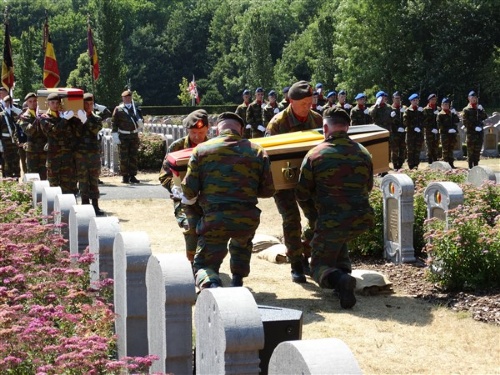
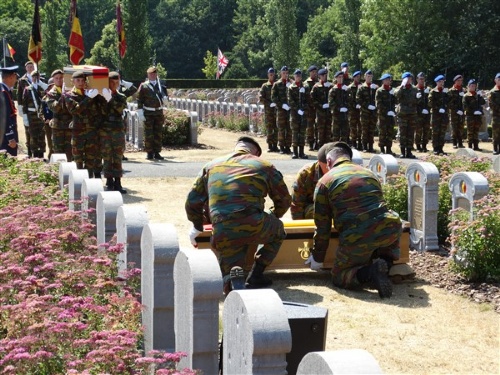
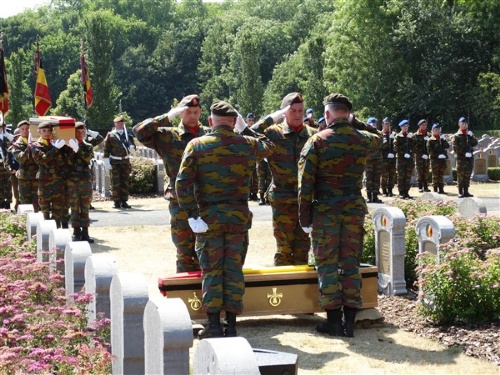

In the meantime, the legal representative of his Majesty, the priest, the descendants and some invited persons went towards the reburial area

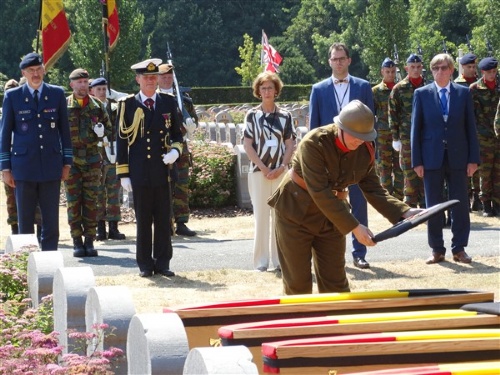
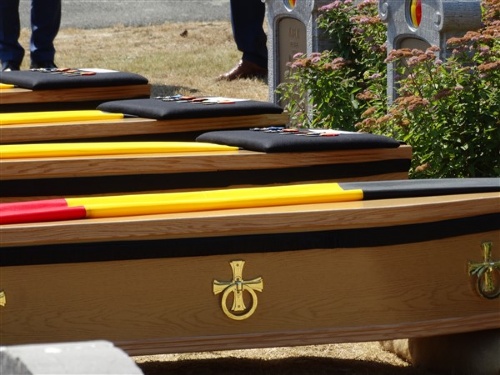
Handing over of personal belongings to the descendants or their representatives. On their turn, they hand over the personal belongings to Lt-Col BEM Ludovic Hermans, CO of the 12/13the Li en the Provincial Commander of Limburg, Col SBH Danny Bijnens
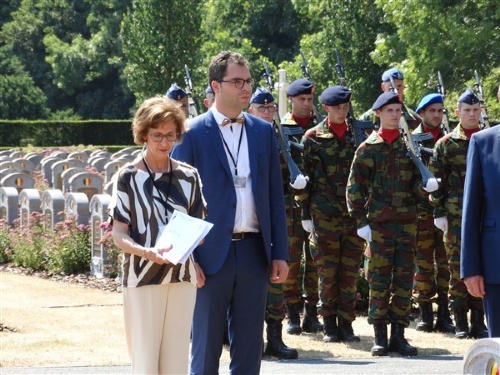
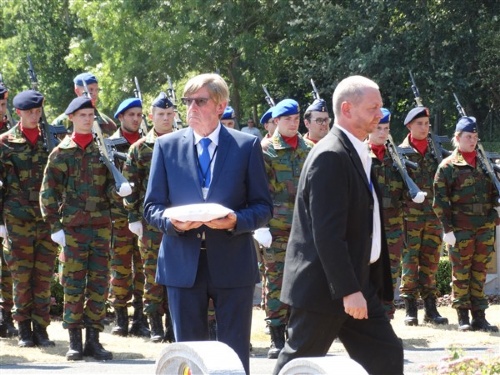
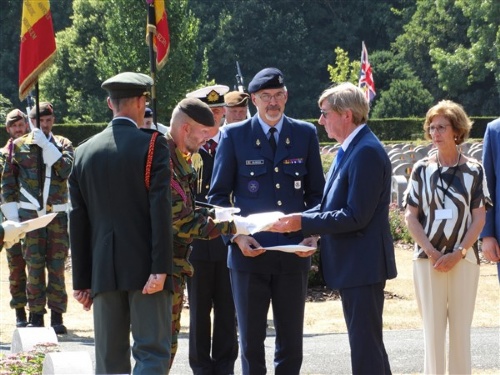

Paul Kiel, the brother of Lydia, who gave her DNA, so a positive identification of soldier Petrus Pintens was possible
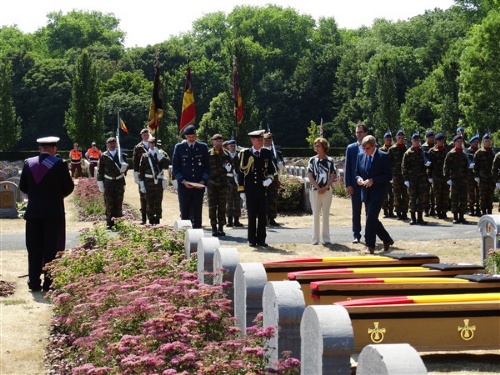
He read a poem of Augusta Peaux
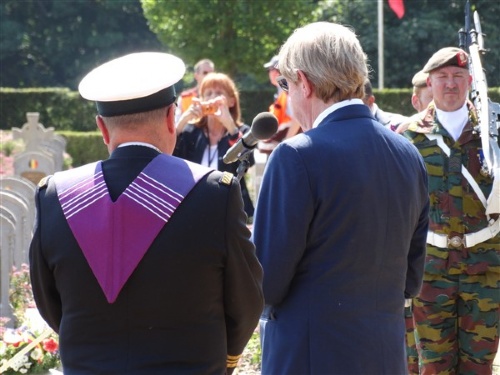
Mr. Arnoud Dewez, Major of Dalhem, read a text written by the family and the city, in honour of soldier Gerard-Joseph Dethier
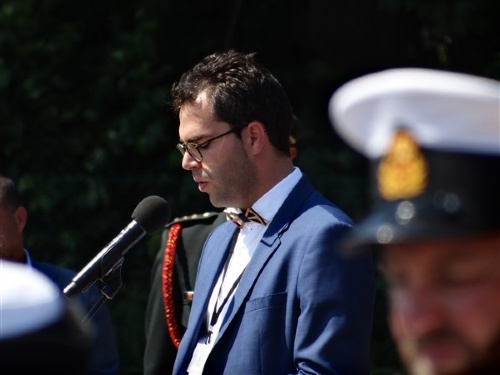
For the family of soldier Félix Jacquet a poem of Fabienne Berthomier was read
Blessing from the Priest Geert Dewulf and contribution by the youth
.jpg)
.jpg)
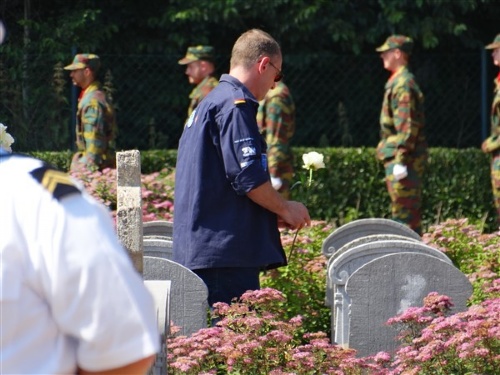
.jpg)
In the meantime, the burning sun started to take its toll. Some flag carriers and some soldiers needed some medical attention. Chairs and flowers were brought in for the flag carriers.
.jpg)
Last Post and 1-Minute of silence
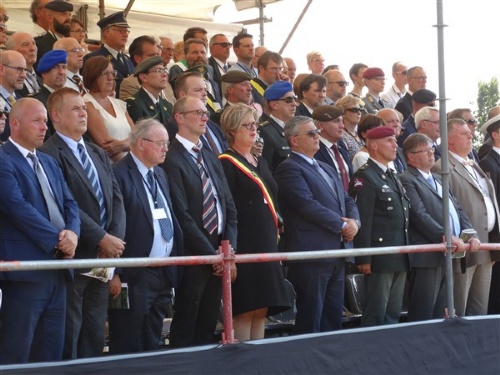
.jpg)
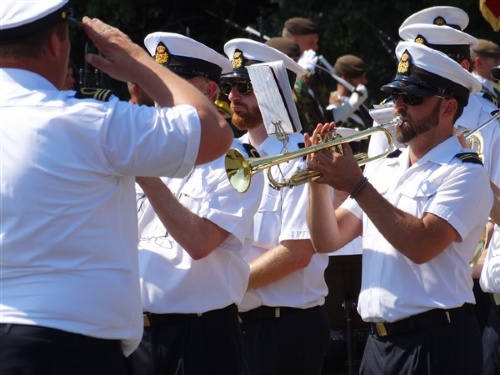

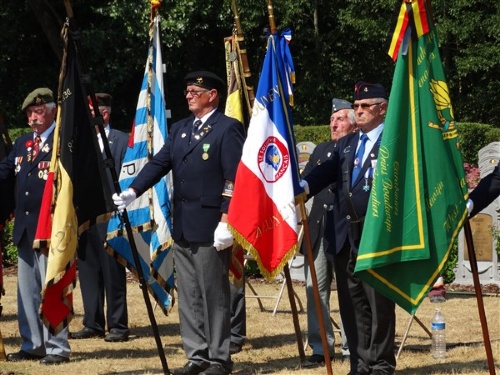
Musical intermezzo 'Danny Boy' by Stephanie Demeulemeester and the Royal Navy Band
.jpg)
Taking in position for the floral tribute
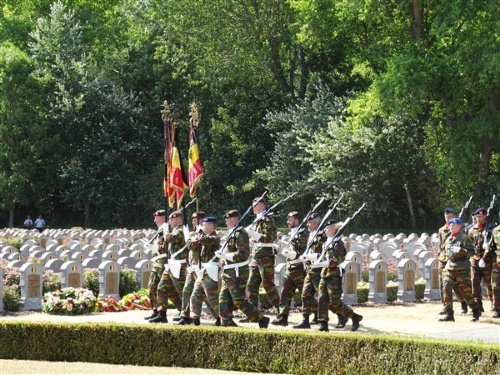
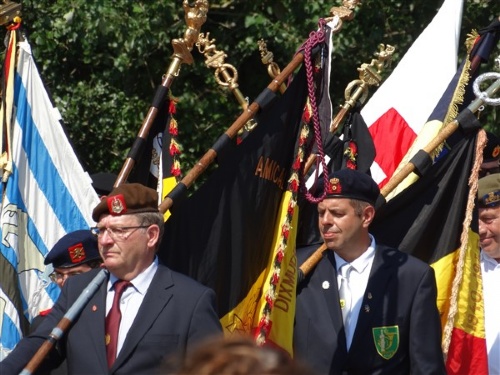
Floral tribute with ornamentation 'Coquelicot-Oh freedom-Halleluya' of Trimarrant
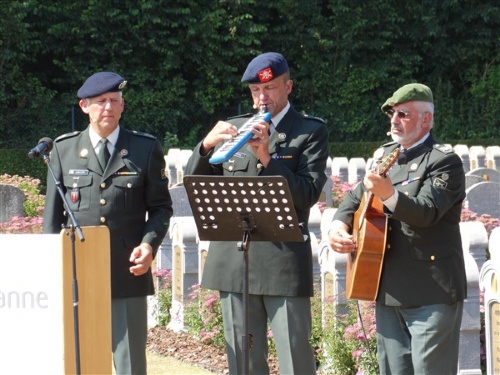
For the Kingdom of Belgium, the legal representative of his Majesty, followed by Te Deum
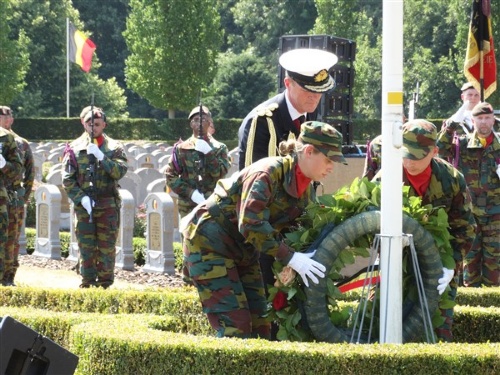
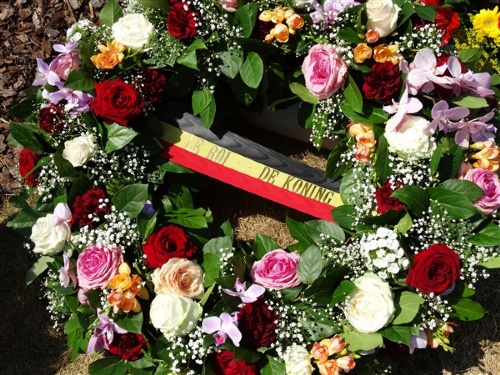
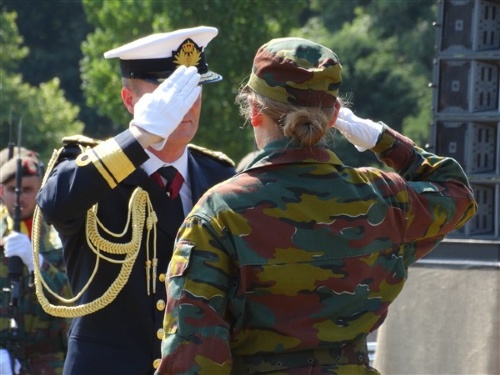
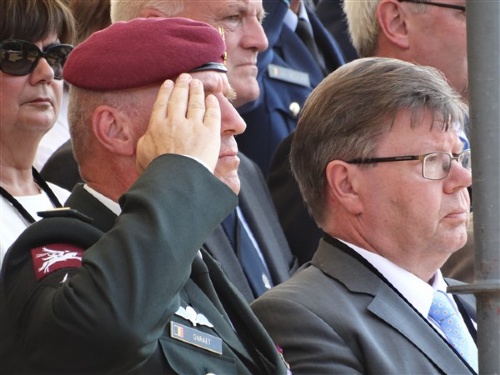
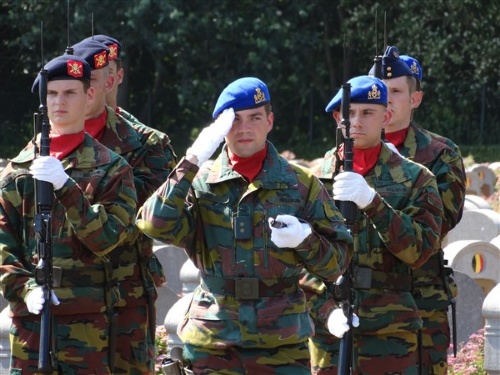
Mr. Steven Vandeput, Minister of Defence and Minister of the War Heritage Institute
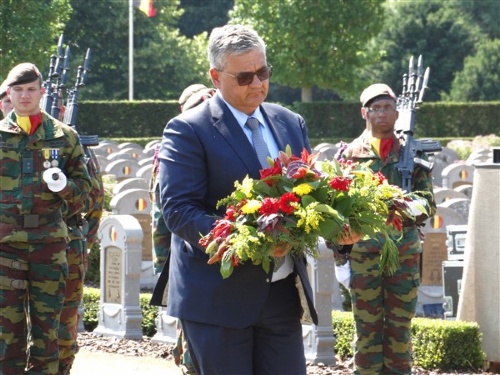
Mrs Ann Vanheste, Mayor of De Panne en Mr. Michel Jaupart, director ad interim War Heritage Institute

Mr. Paul Breyne, Commissioner General WW1, Mr. Ronan Ohagan, representative Embassy UK and Mrs Nadine Kirmse, representative German Embassy
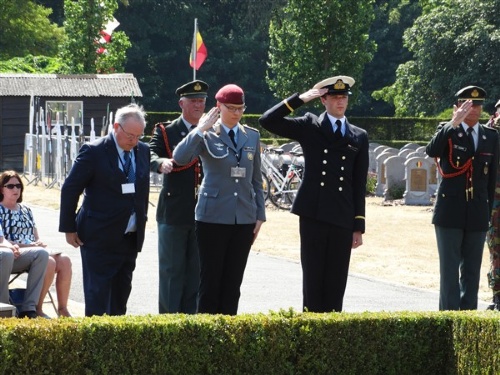
Mr. Koenraad Degroote, representative of the people, Mrs. Cindy Verbrugge, advisor foreign policy Flemish government and Mr. Herbert Ruland, Représentant Communauté germanophone
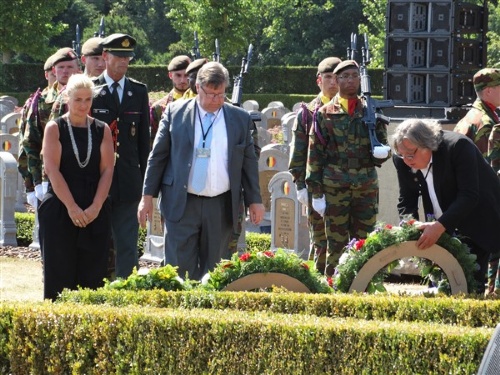
Lt-Col Christophe Onraet, Commander Province West-Vlaanderen and Col SBH Danny Bijnens, Commander Province Limburg

Col BEM Jean-Louis Crucifix, Commander of the Medium Brigade, Kol BEM bd Thierry Babette, Président Amicale Royale du 12de Ligne, Mr. Willy Theunis, president of 'Ons 11de' and Mr. Willy Sonck, National president KNVI-FRN

Mr. Leon De Turck, president NSB and Col bd Yvan Vandenbosch, president Volksbund Deutsche Kriegsgräberfürsorge
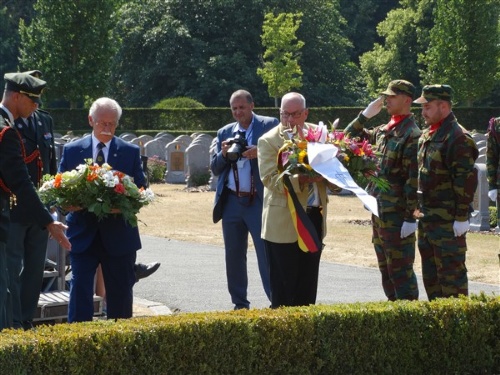
KTZ bd Jan De Vos, president Mars & Mercurius Brugge and Mr. Gilbert Ossieur, president Friends of IFF Museum
Mrs. Nadine Lenssens, Queens Regimental Association and Mr. Bart Bartholomieux, projectmanager MONUMENT
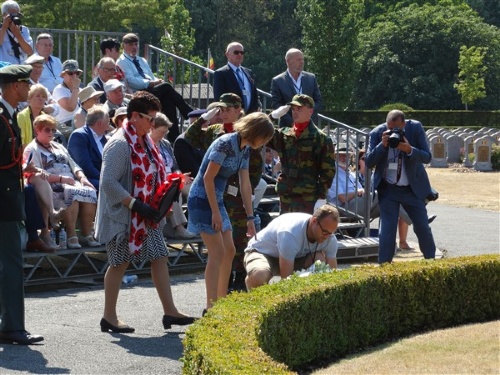
Mrs. Lydia Kiel, family 'Pintens', Mr. Richard Jeaken, city of Mortsel and Mr. George Devacht, president verstandhoudingscomité
Mr. Jacek Grabowski, Consul Embassy of Poland
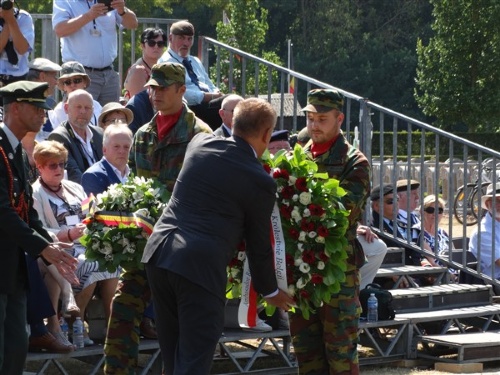
Mayor of Dalhem, Mr. Arnoud Dewez
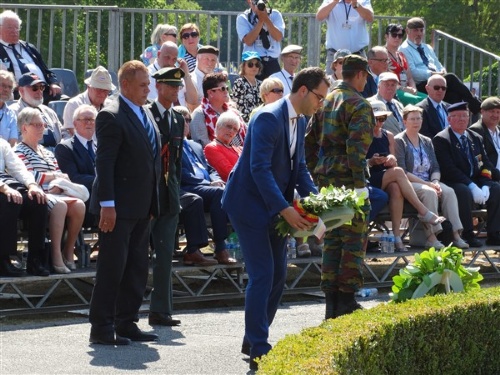
Brabaçonne
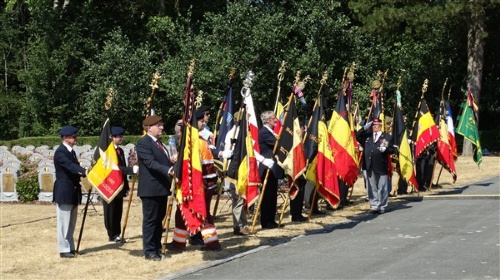
Mr. Alain Fontaine, commander flag carriers
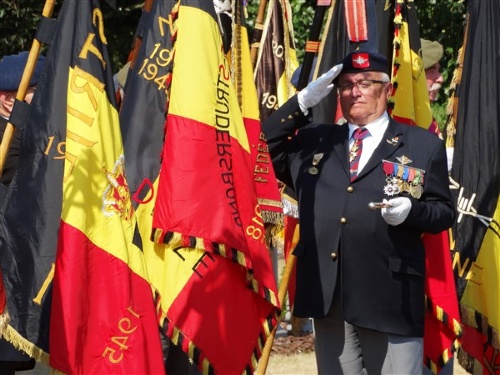
Departure of the legal representative of his Majesty
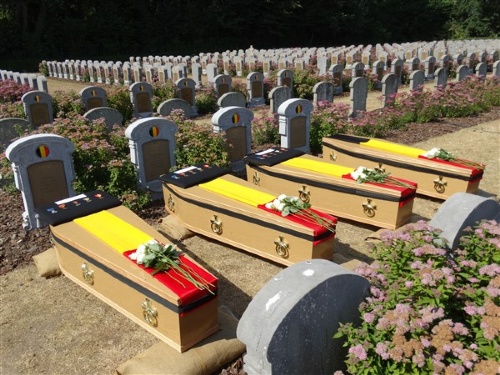
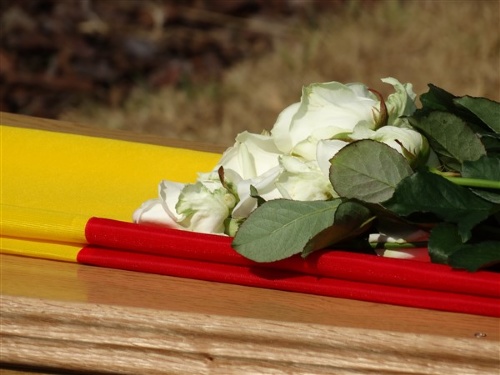
Interview with a descendant of one of th soldiers
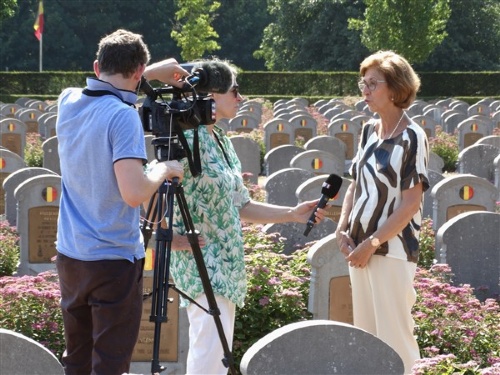
Page made by IDG